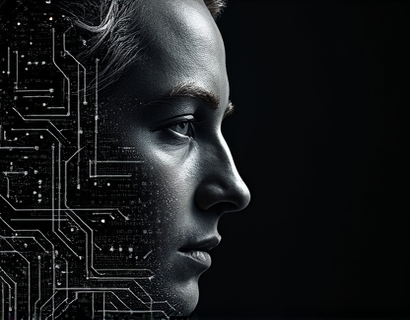AI-Powered Chat Interface: Revolutionizing Access to Architecture Insights for All Users
The field of architecture is vast and complex, encompassing a wide range of topics from design principles to construction techniques. As technology continues to evolve, the way we access and engage with architectural knowledge is also changing. One of the most significant advancements in this area is the development of AI-powered chat interfaces. These innovative tools are transforming how users, including students, educators, and professionals, interact with architectural insights, making information more accessible, reliable, and safe for all ages.
Understanding AI-Powered Chat Interfaces
AI-powered chat interfaces utilize artificial intelligence to facilitate conversations between users and the system. These interfaces can understand natural language, respond to inquiries, and provide specialized information tailored to the user's needs. By leveraging machine learning algorithms, these chatbots can continuously improve their responses based on user interactions, ensuring that the information provided is accurate and relevant.
Accessibility and Safety in Architectural Education
One of the primary benefits of AI chat interfaces is their ability to make architectural knowledge accessible to a broader audience. Students and educators can engage with these tools to explore various aspects of architecture, from historical styles to modern design techniques. Importantly, these interfaces are designed with safety in mind, ensuring that the content is appropriate for users of all ages. This focus on safety is crucial, especially when the target audience includes children and young students who are just beginning to explore the world of architecture.
Educational Focus: Enhancing Learning Experiences
The educational potential of AI-powered chat interfaces is immense. By providing instant access to a wealth of information, these tools can enhance the learning experience for students. For instance, a student studying architectural history can ask the chat interface about specific architectural movements, famous architects, or significant buildings. The AI can provide detailed explanations, images, and even suggest further reading materials, creating a rich learning environment.
Interactive Learning
Interactivity is a key component of effective learning. AI chat interfaces allow users to engage in a dialogue, asking follow-up questions and seeking clarification on complex topics. This interactive approach encourages critical thinking and deeper understanding, as students are not merely passive recipients of information but active participants in their learning journey.
Customized Learning Paths
Another advantage of AI chat interfaces is their ability to tailor responses based on the user's level of knowledge and interest. For example, a beginner might receive simplified explanations, while a more advanced user could access in-depth analyses and technical details. This customization ensures that all users, regardless of their background, can benefit from the information provided.
Specialized Information for Architecture Services
In addition to educational content, AI chat interfaces can also provide specialized information about architectural services. Users can inquire about various aspects of the architecture industry, including design processes, project management, and regulatory requirements. This information is invaluable for aspiring architects and professionals looking to stay updated on industry trends and best practices.
Understanding Architectural Services
Architectural services encompass a wide range of activities, from initial consultations to project completion. Users can ask the chat interface about the different stages of a project, the roles of various professionals involved, and the importance of collaboration in the design process. By providing clear and concise information, AI chat interfaces can demystify the architectural process and empower users to engage more effectively with the industry.
Staying Informed on Industry Trends
The architecture industry is constantly evolving, with new technologies, materials, and design philosophies emerging regularly. AI chat interfaces can help users stay informed about these trends by providing updates on recent developments, innovative practices, and case studies of successful projects. This information is essential for both students and professionals who want to remain competitive in the field.
Content Verification and Reliability
One of the challenges in accessing information online is the prevalence of inaccurate or misleading content. AI chat interfaces address this issue by ensuring that the information provided is verified and reliable. By sourcing data from reputable architectural databases, academic publications, and industry experts, these tools can deliver accurate insights that users can trust.
Building Trust with Users
Trust is a critical factor in the learning process. When users know that the information they receive is credible, they are more likely to engage with the content and apply it to their studies or professional practice. AI chat interfaces can enhance this trust by providing citations and references for the information shared, allowing users to explore sources further if they wish.
Child-Friendly Content
For younger users, it is essential that the content is not only accurate but also age-appropriate. AI chat interfaces can be programmed to filter out complex jargon and present information in a way that is understandable for children. This child-friendly approach encourages curiosity and exploration, making architecture an exciting subject for young learners.
Encouraging Exploration and Creativity
Architecture is not just about technical knowledge; it is also a field that thrives on creativity and innovation. AI chat interfaces can inspire users to think creatively by providing prompts, design challenges, and examples of innovative architectural solutions. By encouraging exploration, these tools can help users develop their unique design philosophies and approaches.
Design Challenges and Prompts
AI chat interfaces can present users with design challenges that stimulate their creativity. For example, a user might be asked to design a sustainable building for a specific location, considering factors such as climate, materials, and community needs. These challenges can help users apply their knowledge in practical scenarios, fostering a deeper understanding of architectural principles.
Showcasing Innovative Solutions
By sharing examples of innovative architectural solutions from around the world, AI chat interfaces can expose users to diverse design approaches. This exposure can inspire users to think outside the box and consider how they can incorporate unique elements into their own designs. The ability to learn from real-world examples is invaluable for aspiring architects.
Future of Architectural Knowledge Sharing
The integration of AI chat interfaces into architectural education and practice represents a significant shift in how knowledge is shared and accessed. As these technologies continue to evolve, we can expect even more sophisticated tools that enhance user engagement and learning outcomes. The future of architectural knowledge sharing is bright, with AI at the forefront of this transformation.
Continuous Improvement and Adaptation
AI chat interfaces are designed to learn and adapt over time. As more users interact with these tools, the AI can refine its responses and improve its understanding of user needs. This continuous improvement ensures that the information provided remains relevant and up-to-date, reflecting the latest developments in the architecture field.
Expanding Access to Global Knowledge
One of the most exciting prospects of AI chat interfaces is their potential to expand access to architectural knowledge on a global scale. Users from different regions can engage with the same platform, sharing insights and experiences that enrich the learning experience for everyone. This global perspective can foster collaboration and innovation in architectural design.
Conclusion
AI-powered chat interfaces are revolutionizing access to architectural insights, making specialized information available to users of all ages in a safe and educational environment. By focusing on accessibility, safety, and reliability, these tools empower students, educators, and professionals to engage with architectural knowledge in meaningful ways. As we look to the future, the potential for AI to enhance learning and creativity in architecture is limitless, paving the way for a new generation of architects and designers who are well-equipped to tackle the challenges of tomorrow.









































